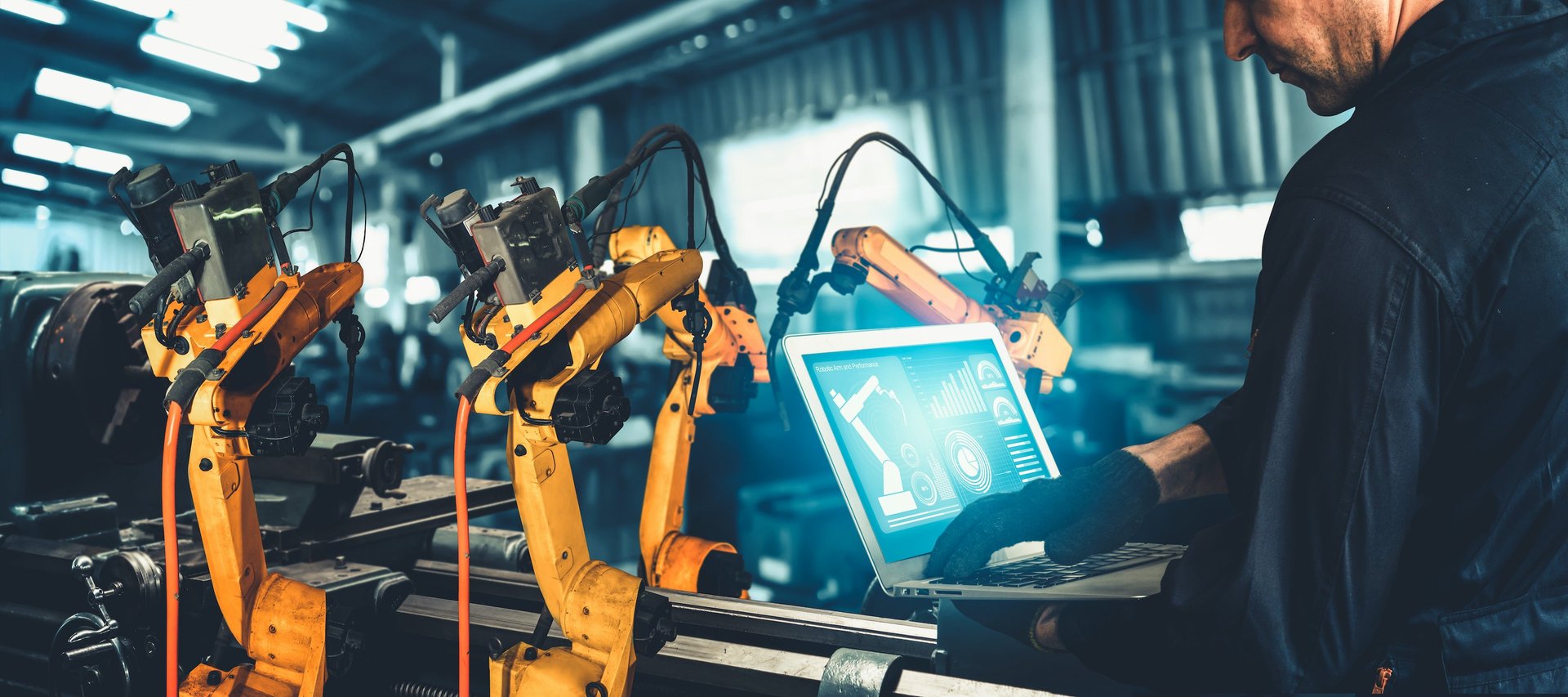Four technologies shaping manufacturing’s future
Digitization got many businesses through Covid-19 lockdowns. Leaders who were hesitant about using SaaS technology or augmented reality eventually found them to be the most effective means to continue operations.


Digitization got many businesses through Covid-19 lockdowns. Leaders who were hesitant about using SaaS technology or augmented reality eventually found them to be the most effective means to continue operations.
The vast majority—93%—of industrial companies are on a digital transformation (DX) journey, with about half in the planning stage or actively piloting. PTC’s State of Digital Transformation shows that companies further along in their DX maturity have been able to effectively harness the capabilities of emerging technologies, better equipping them for the years ahead.
Here are four technologies that will play a pivotal role in the future of manufacturing.
1. Gearing up for 5G
Over the past decade, the number of connected devices and sensors has grown exponentially, and is likely to increase in industrial settings. With this level of connectivity comes the need for scalability, performance, accessibility, reliability, and reach, all at a lower cost of ownership. Manufacturers should start preparing for 5G developments now to help support reliability and resiliency, ensuring that their operations are future-proof.
With 5G, manufacturers will see an improvement in existing application functionality, and discover new use cases in industrial environments. Increasing the rate of production for Industrial Internet of Things (IIoT) data from factory floors, for example, will improve systems reactions, overall equipment effectiveness (OEE), and downtime. 5G and IIoT will make it easier for companies to implement augmented reality training programs.
5G frees up, democratizes, and scales compute resources for efficiency, transferring information to the cloud in near real-time. These developments will help manufacturers effectively incorporate trend analysis into production planning and optimization, and usher in a new era of ubiquitous connectivity to bolster existing and emerging industrial software applications.
2. Accelerating the industrial internet of things (IIoT)
The International Data Corporation (IDC) predicts that by 2025, there will be 55.7 billion connected devices worldwide; 75% of those devices will connect to an IoT platform. In the context of the 5G revolution, manufacturing use cases will undoubtedly rise. IIoT has the potential to maximize revenue growth, reduce operating costs, and increase asset efficiency.
As enterprises look to expand IIoT with 5G connectivity, a clear implementation strategy and goal is imperative. Already, manufacturing companies have attempted to dive head first into IIoT without the proper preparation, resulting in failed pilots and lost DX momentum. The most impactful projects have short timelines to measurable impact and are scalable across the business.
The industrial market is also demanding more out-of-the-box IIoT functionality to reduce the time and resources required to implement. These pre-built applications will allow manufacturers to expand IIoT in smart, strategic ways to support their respective business goals.
3. Optimizing artificial intelligence
The possibilities of artificial intelligence are seemingly infinite. But to drive business value, manufacturers need to be strategic in their AI implementation.
Here are a few examples of AI driving innovation in manufacturing:

To successfully incorporate artificial intelligence, companies should evaluate their specific needs and extensively research potential solutions.
4. Making way for spatial computing
PTC defines spatial computing as “the digitization of activities of machines, people, objects, and the environments in which they take place, in order to enable and optimize actions and interactions.” It is the next evolution of physical and digital convergence, and will soon create more seamless interactions between these parties to perfect processes and foster real-time collaboration.
On a factory floor, for example, there are thousands of disparate data streams. Spatial software and analytics exposes correlations and insights that were previously invisible to business leaders. In combination with augmented reality, spatial computing can help bring this data to life, offering an expanded, real-time view of a space, and a lens with which to evaluate new, high-value information.
Disruption comes in many forms, from pandemics to supply chain challenges to natural disasters to new competitors. With the rate of change moving faster than ever, companies must identify new ways of doing business and seek the tools to help them innovate faster, reduce costs, drive efficiency, and stay ahead of the competition.